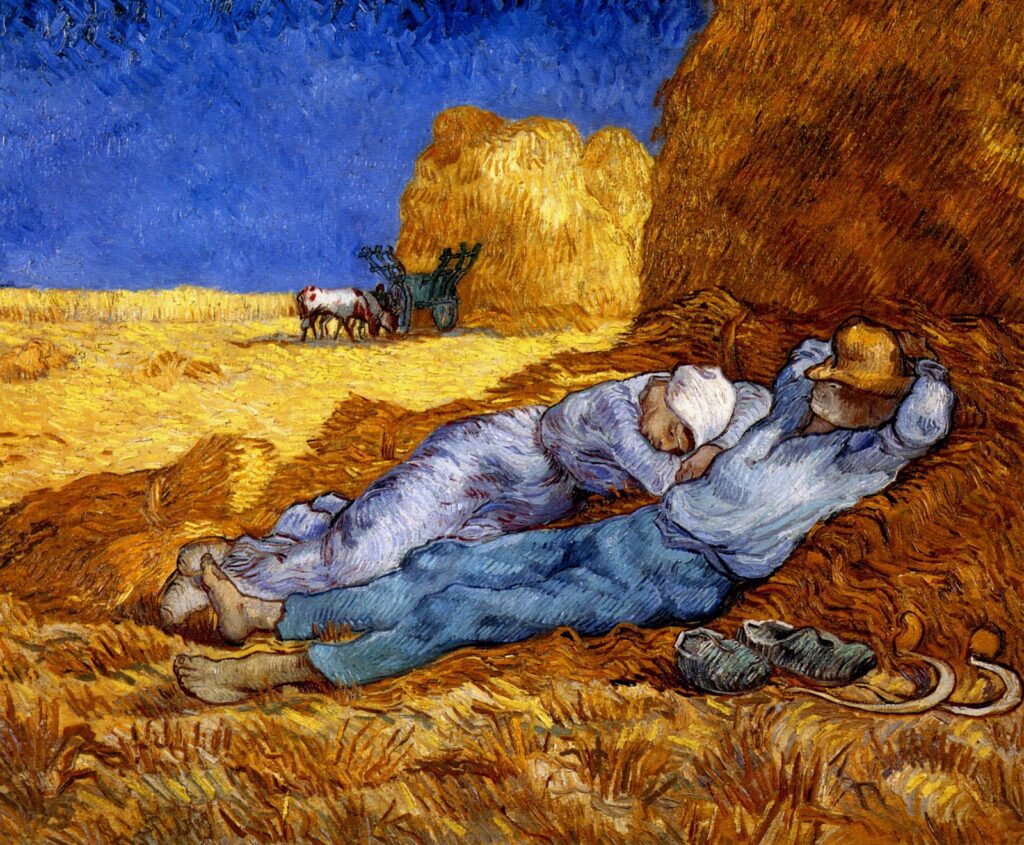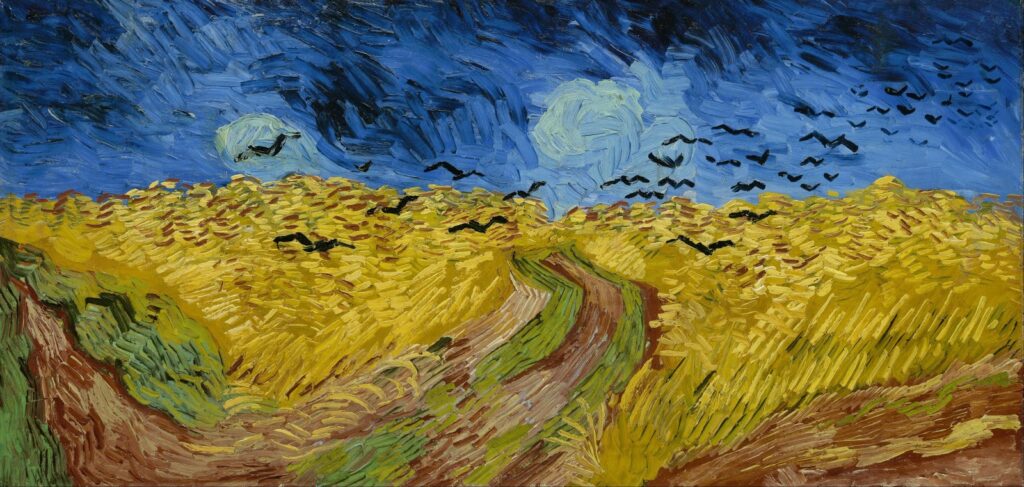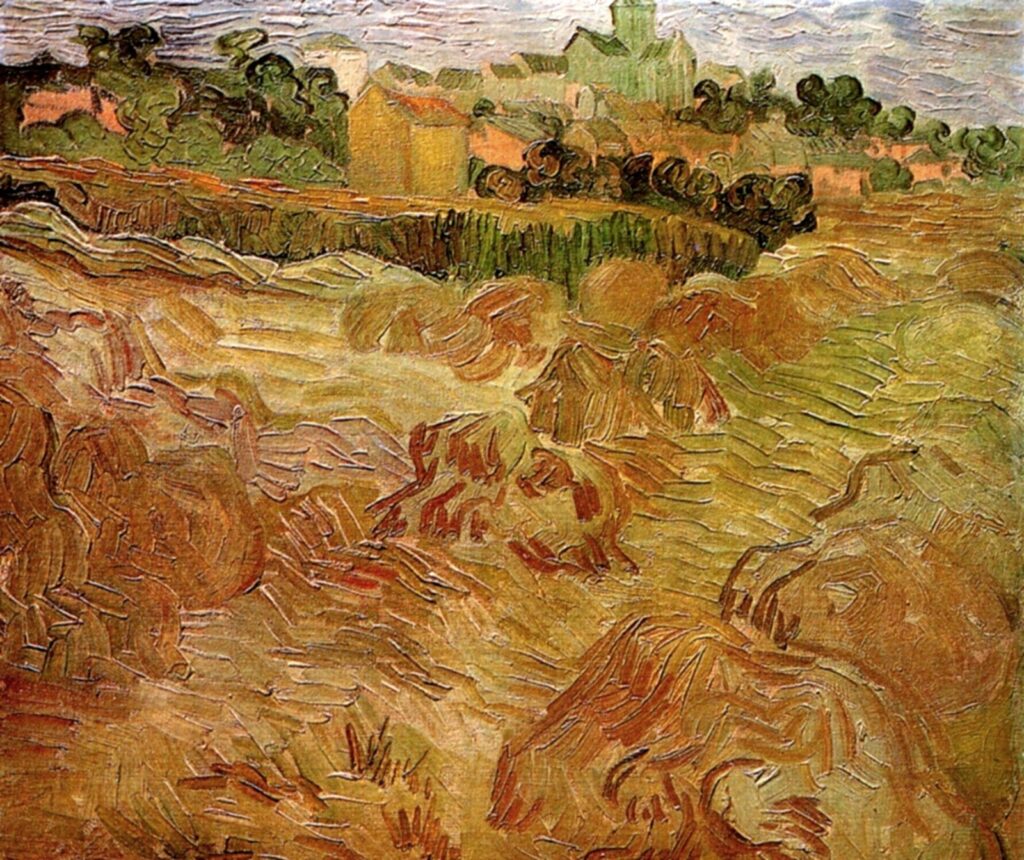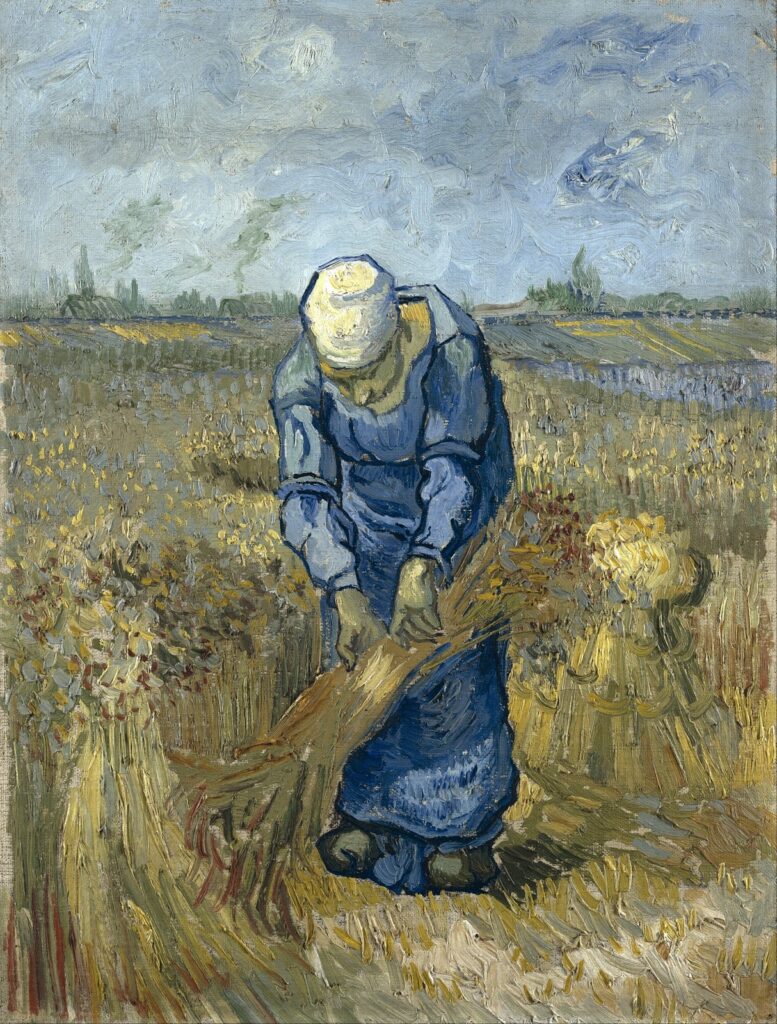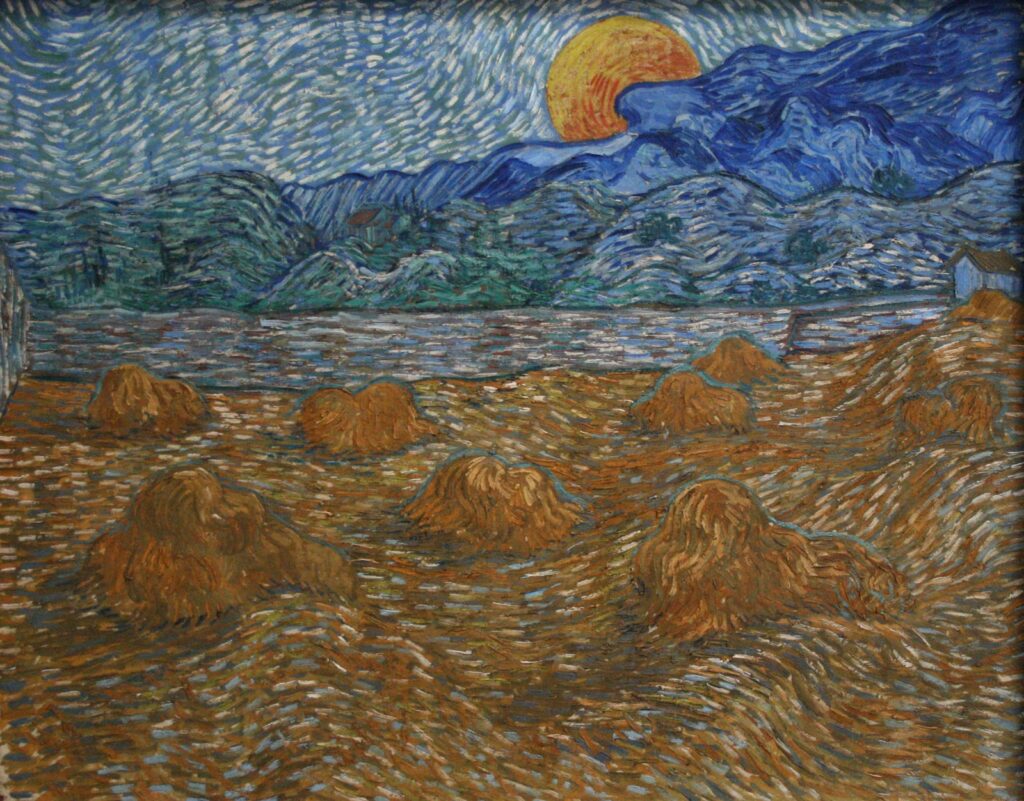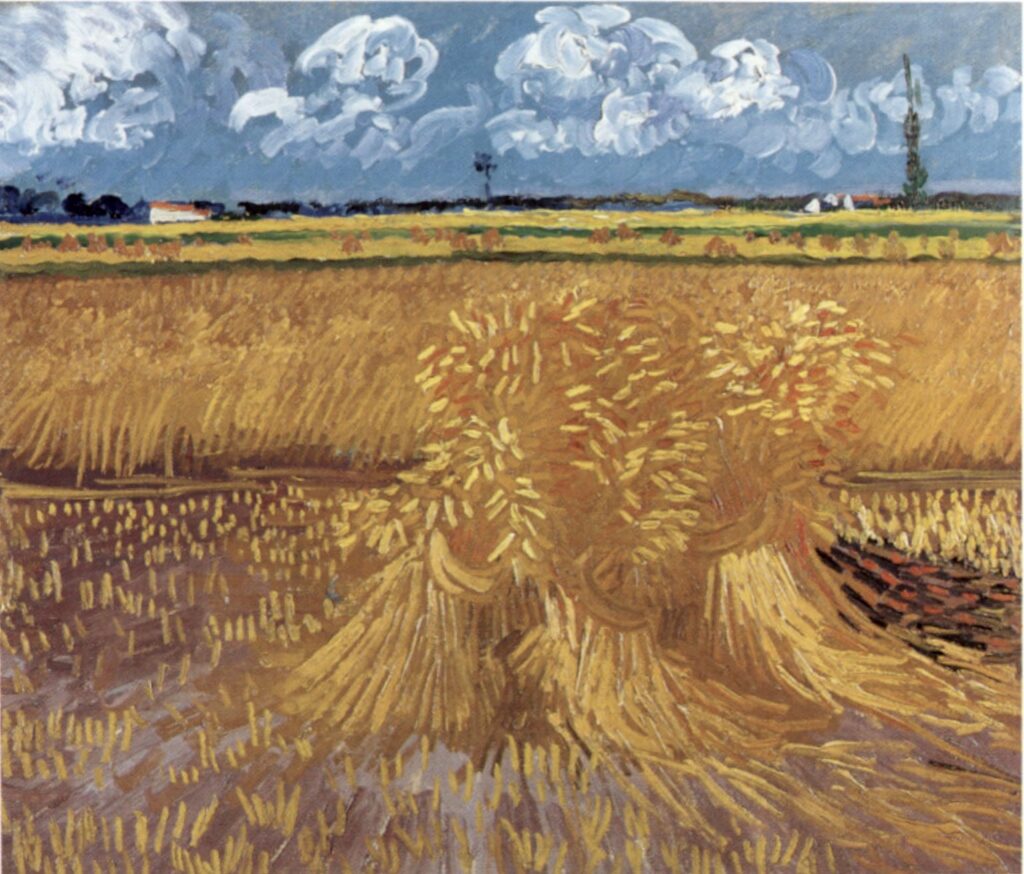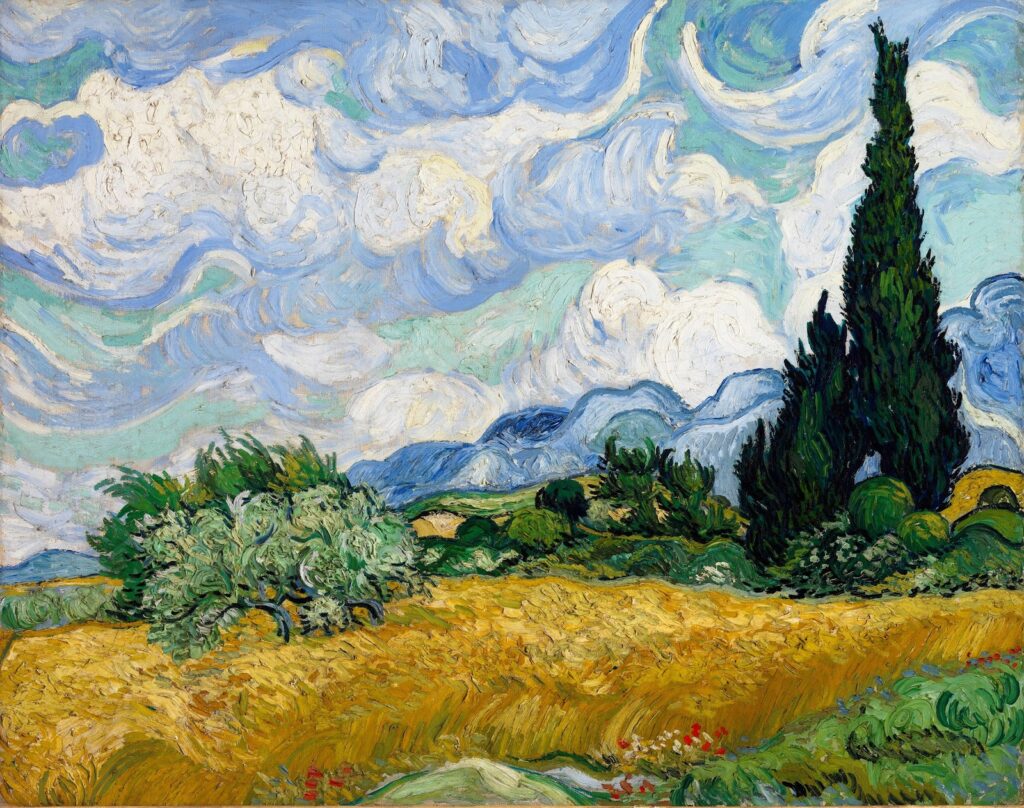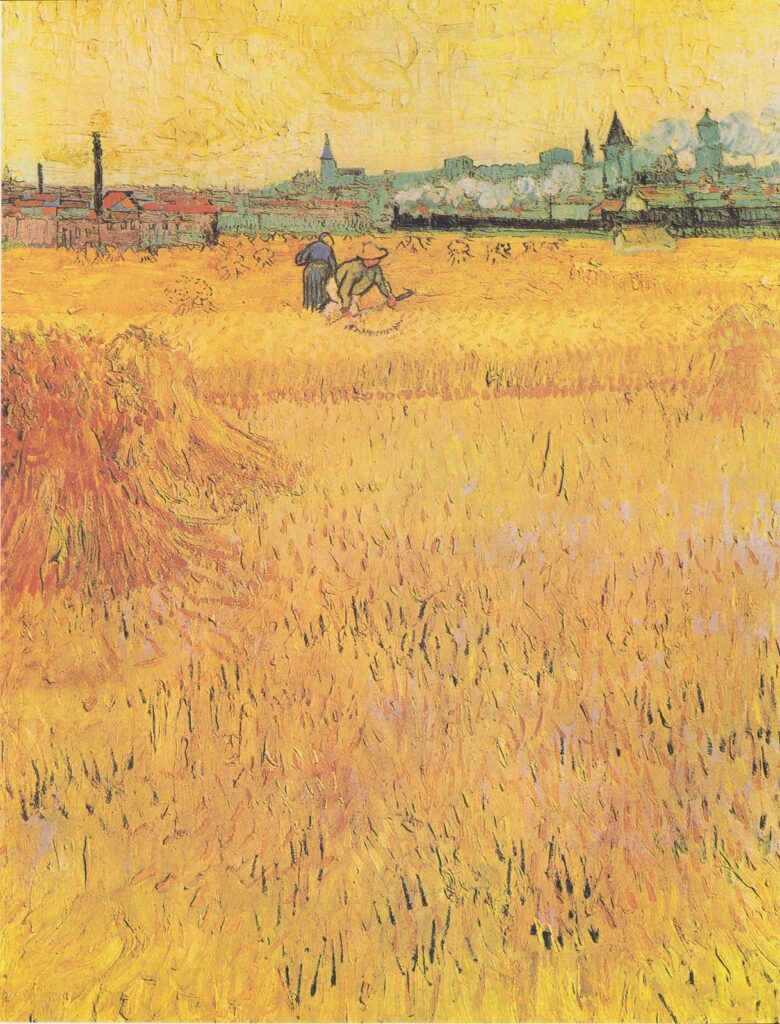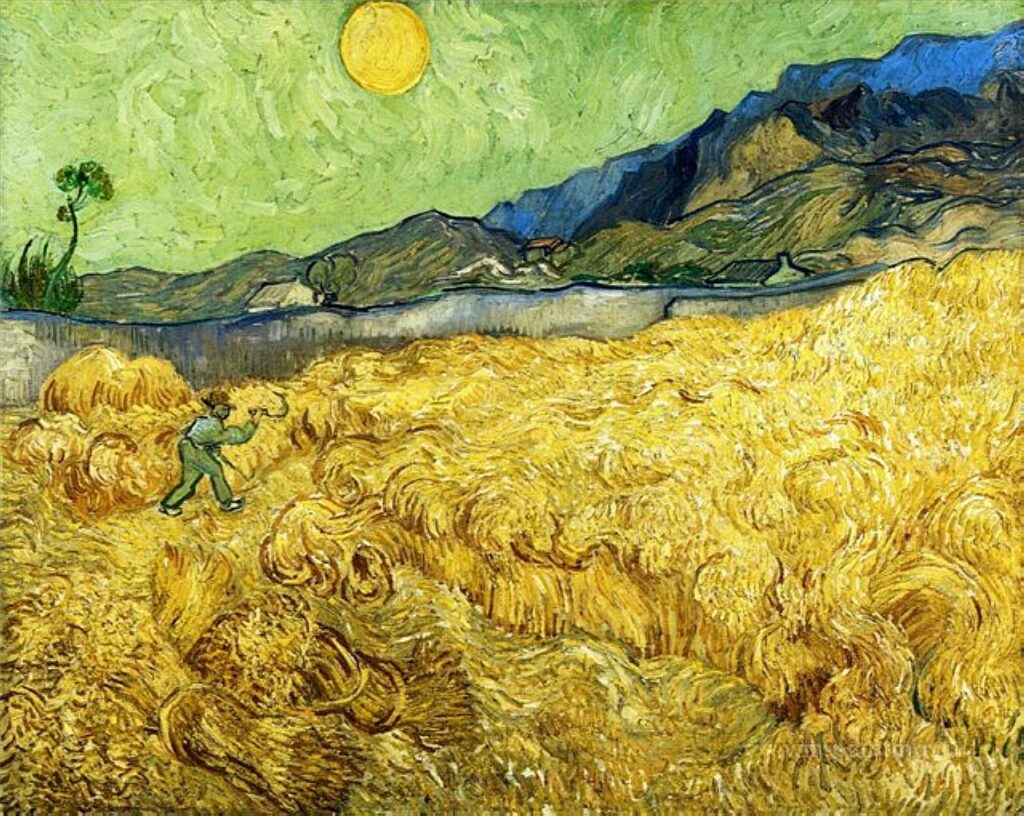Arts and Culture
Visual Arts
WHEAT IS MANY THINGS AND HAS MANY MEANINGS.
First and foremost, wheat sustains life. That is obvious. Equally obvious is the fact that the production of wheat is "a way to pay the bills". Wheat can be stored and transported making it a useful trade commodity. But it is also much more. This hobby project will cover as many aspects of the prairie wheat industry as I have had experience with and may also, I hope, present a fuller understanding of the links between wheat and life.
A field of wheat under a clear blue sky is a beautiful thing. Vincent Van Gogh is, in the view of many, the artist who was most skillfully portrayed the beauty and meaning of a field of wheat. His paintings may be the best exposure to the beauty of farming and the countryside that many people will ever get. To him, a field of wheat was also a window into a deeper understanding of life itself.
Van Gogh studied theology and worked briefly in a ministry serving the poor before devoting himself to painting full time. He saw wheat as a symbol of God’s gifts to mankind in the Christian tradition. These paintings represent the fruits of honest manual labour, and were also symbolic of the conception, growth and ripening of human life so that life may serve God's purpose. As these paintings show, there are many different ways of perceiving and representing a field of wheat. They can simply be pretty pictures to some or something that others can read deeper meaning from as they reflect on what the artist may have been thinking or wanting to express while the work of art was being created.
Van Gogh had almost no financial success as an artist during his lifetime. He apparently only sold 1 painting while alive. More recently his paintings have sold for astronomical sums with one purchased in 1990 by a Japanese collector for US $83 million. The examples below are a few of the dozens of pictures of wheat fields he created during his short career. Wheatfield With Crows is believed to be the last painting done before Van Gogh's untimely and tragic death in 1890.
You can learn more about Vincent Van Gogh's art at http://www.vincentvangogh.org/.
